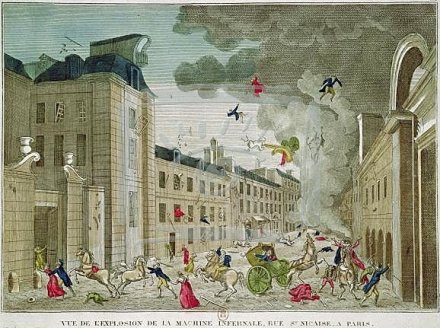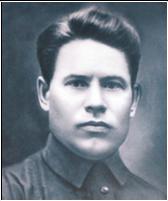On this date in 1629, the German city of Mergentheim burned its late mayor’s widow for witchcraft.

Witch-hunting was a growth industry for Thirty Years’ War-torn Germany in the late 1620s.
Not long before, a Mergentheim Teutonic knight had been petitioned for help extracting a schoolboy from Wurzburg, where the absentee father feared he was running with a devilish crowd. Once the authorities heard that witchy stuff, all the inhuman gears came to life.
Instead of returning the tyke to his concerned dad, Wurzburg arrested the boy, strongarmed him into admitting his Satanic ties, and burned him at the stake. Nine years old.
That was Wurzburg. But back where the allegation originated, writes H.C. Erik Midelfort, “the discovery in Mergentheim that children might be guilty of witchcraft was to have serious consequences.”
Like a fresh plague outbreak, a witch persecution broke out in Mergentheim and neighboring Markelsheim, with some schoolchildren hounded by inquisitors within a few weeks of their compatriot’s execution over in Wurzburg. From there, it became epidemic all over town. By October 1628, the first witches were shrouded in flames for their neighbors’ edification. Over the course of 1629, the peak year for the Mergentheimer Hexenprozess, 91 humans were put to death as Satanic wizards — not counting those who were tortured to death.
Nor was this strictly confined to the weakest prey, your outcasts and servants.
Our victim today was big game, a wealthy city elite, and she wasn’t the only such. These must have made some kind of hedgerow gossip, but the general hysteria of the place made it dangerous to sustain any public controversy even about the downfall of the recently well-connected.
Midelfort, again, on the very relatable circumstance of a prosperous innkeeper who was a little too incensed for his own good at seeing Anna Gurren die.
Thomas Schreiber had a strong sense of justice. When the trials in Mergentheim had run only two months, he had already lost faith in the judicial procedure. On December 1, 1628 when Martha, wife of Burgermeister Hans Georg Braun, was executed, Schreiber was heard by many persons exclaiming that she had been done a gross injusice. Schreiber even let slip that “King Nero” had also conducted such bloodbaths. Six weeks later Schreiber was again appalled when the extremely wealthy widow of Lorenz Gurren was convicted of witchcraft and executed on January 12, 1629. When attending the execution of the lady, he had the temerity to express amazement over her confesion. The Amtmann Max Waltzen turned to him and said pointedly, “Ha, ha, those who know the devil should not be so amazed.” That kind of talk perturbed Schreiber, and when magistrates began avoiding him, he prepared to flee. During this time he repeatedly denounced the court for its unjust trials and declared that “if anything happens to me, let every pious Christian fear for himself.” He also prayed that “God might preserve everyone from Neuenhaus [the jail and torture chamber], for even the most pious if put in there would be found to be a witch.” The trials, he insisted, were bloodbaths, and the magistrates were out to “wash their hands in my blood.”
Schreiber fled town on February 1, having heard that people had started denouncing him. But he didn’t make it long.
He, too, was dead by the end of May — as a confessed (just like he predicted) witch.
On this day..
- 1861: Antonino Aberastain - 2020
- 1934: Surya Sen - 2019
- 1949: Margaret "Bill" Allen, transgender - 2018
- 1830: Agnes Magnusdottir and Fridrik Sigurdsson, Iceland's last executions - 2017
- 2015: Laila Bint Abdul Muttalib Basim, filmed - 2016
- 1874: Three for misshapen love - 2015
- 1864: Samuel Wright, by contrast - 2014
- 1400: Sir Thomas Blount, "bowels burning before him" - 2013
- 2010: Gary Johnson - 2011
- 1959: 71 after the Cuban Revolution - 2010
- 1928: Ruth Snyder and Judd Gray - 2009
- 1951: Albert Guay - 2008


 Ryutin (
Ryutin (



